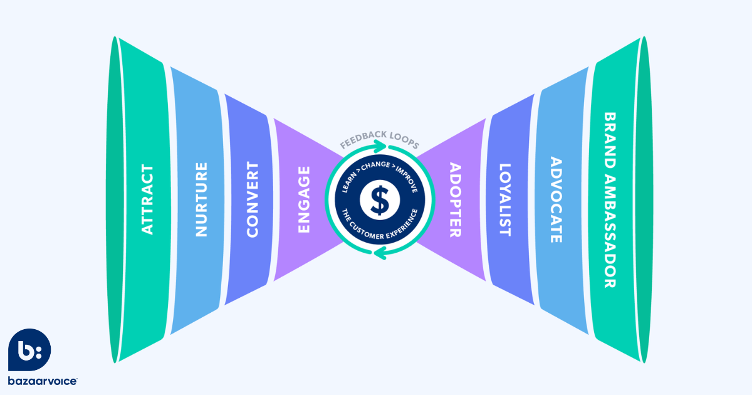By Davis Jones, Account Manager at SWC Partnership.
This September, I attended HubSpot’s INBOUND 24 conference, where marketing and sales experts come together to share insights on the latest trends and strategies in the industry.

Over the three-day conference, I picked up valuable lessons that can significantly impact your approach to international branding. In this blog, I’ll share my top 10 takeaways from the event and how to apply them to strengthen your brand’s presence globally.
1) LinkedIn advertising: fine-tune for lower cost and higher quality
With over 1 billion professionals on the platform, LinkedIn remains a powerful platform for B2B marketing, but it’s crucial to optimise your ads for maximum impact.
Most advertisers pay 2-3x more than they need to for a click due to suboptimal campaign setup.
A key point I learned was to always disable audience expansion. While it might seem beneficial to reach a broader audience, it often includes people who don’t fit your target profile, ultimately lowering lead quality.
Also, there is no direct link between the amount you bid and the quality of leads. Therefore, be sure to use manual bidding, often hidden by LinkedIn, instead of the default setting ‘maximum delivery’ to help you get clicks at a lower cost.
2) Email marketing: it all starts with the ‘from name’
Your email strategy begins with your ‘From Name,’ which can greatly influence open rates. Some successful approaches include:
- Brand Name + Offer (e.g., “Meta for Business”) saw a 21% increase in open rates.
- First Name + Brand (e.g., “Mark at Prep Kitchen”) resulted in a 24% boost.
- Name Only (No Brand) (e.g., “Neil Patel”) increased open rates by 27%.
These simple changes can make a big difference, especially when trying to connect with international audiences on a personal level.
Studies also show that getting negative in your subject line can increase open rates by 34%!
Using words like ‘suck’, ‘fail’ and ‘avoid’ or phrases such as ‘The Ugly Truth…’, ‘Are you falling behind?’ or ‘Why (Marketers) can’t afford to…’ in your subject lines can help.

3) Content isn’t king without a strategy
Did you know that 94.29% of web pages receive no traffic from SEO, and 59.41% of social posts get no engagement?
This shows that simply producing more content is not the answer.
Here are my top 5 takeaways on producing content that generates traffic and engagement:
- Write your content, do not rely on AI – human-written articles generate 5.4 times more traffic than those written by AI.
- ‘How To’ articles and Listicles are two great formats to use for producing engaging content e.g. The Top 10 Movies of 2020.
- Use your phone for video – according to the data, phone-filmed content outperforms high-production value films.
- Test content ideas for X (formerly known as Twitter) – unlike Meta and LinkedIn, X doesn’t punish you for bad content, making it the perfect testing ground for content ideas.
- Create short-form videos from your winners on X – video is still king for generating engagement with your audience.
4) Followers are less important than engagement
Followers do not matter, engaged followers matter. It’s tempting to focus on growing your follower count, but it’s more valuable to have a smaller, engaged community than a large, inactive one.
This is because social media algorithms will first show your content to a group of your most engaged followers, then based on the initial response from this segment, they will then show your post to the next 1,000 people, 100,000 people and so on. So, if that first batch of people don’t engage, your post will never get a chance to go viral.
For international branding, engaged followers can help amplify your message across different regions and increase awareness globally.
5) Data drives success
Data tells us who our users are, how often they use our product, how long for, and what features they’ve used, or haven’t used.
A key lesson I learnt from this session was to think about ICPs in terms of use cases, and not firmographics. This approach helps you understand and map out the different customer journeys, which in turn can help tailor your touchpoints to these different types of users i.e. personalised landing pages, CTAs, etc.
Bonus tip: Reducing the number of fields on a contact form from seven to four can help to increase conversion rates by up to 30%.
6) Metrics that matter
With 100s of KPIs to track, it’s easy to waste time and energy on irrelevant metrics. During the conference, the top three revenue metrics were identified as:
- Net Revenue Retention: Measures how much revenue you can retain and grow from existing customers.
- Profitability: Calculated by dividing profit by revenue and multiplying by 100.
- New Business Revenue Growth: The percentage growth in revenue from new business compared to the previous period.
Monitoring these metrics helps ensure that your international strategies are not only expanding your reach but also contributing to sustainable growth.
7) Bow Tie Analysis: Creating Lasting Value
As marketers, it’s often easy to focus on the traditional funnel stages: Awareness, Interest, Desire and Action, and forget about what happens post-sale.
The bow tie analysis model demonstrates the importance of delivering ongoing value to your customers.

The bow tie funnel adds on four stages of customer relationship development: Adopter, Loyalist, Advocate and Ambassador.
Customer loyalty programs are a great way to retain customers and turn them into brand ambassadors. According to a survey done by KPMG, 69% of shoppers say that loyalty programs influence their choice of retailers.
8) Generate authentic AI content from conversation
When using AI tools like ChatGPT, the way you structure your prompts can make a huge difference in the output you receive. Here are the top 5 mistakes people make:
- Copying generic prompts you’ve seen online
- Not giving enough context – Provide a framework of the content you require, it’ll drastically improve the response!
- Using the wrong model – use o1 for more complex jobs and 4o for more simple tasks.
- Not using audio as your input – utilising voice recordings as your context/input can help produce authentically written content (e.g. sources like Voice notes, Meeting recordings, interviews, etc.)
- Taking results as fact – AI is fallible and is 98% correct at the best of times, always stress test the output you receive.
9. LinkedIn creative strategies to maximise engagement
Creating engaging content for a global audience requires creativity and strategy. Six key principles from Inbound 24 include:
- Context-Aware: LinkedIn sits at the intersection of people’s personal and professional lives. Therefore, topical and relatable content that is trend-aware tends to perform best.
- Unified: 84% of customers believe that design consistency across all touchpoints reinforces a brand’s credibility.
- Relatable & Emotive: Humour has been shown to increase engagement by 65%. Optimising content for a specific emotional reaction will set you up for success.
- Distinctively On-Brand: 84% of buyers incorrectly identify the brand behind the ad. Using consistent visual elements, language, and style is crucial in a crowded global market.
- Scroll-Stopping: Experiment with engaging formats, like vertical banners or square layouts, which perform better in social feeds. Be sure to also check out Adobe’s Pantone of the Year for the most vibrant, eye-catching colours to try.
- Value Exchange: Offer original, thought-provoking content that provides unique insights or challenges conventional thinking.

10. Good vs great vs the best GTM strategies
The final session highlighted the differences between good, great, and the best Go-To-Market (GTM) strategies. Below I have outlined the 4 stages of the best GTM strategies:
- Market Insights: The best GTM strategies turn unidentified market needs into revenue opportunities. E.g. The Stanley Cup, traditionally marketed at men as an outdoor item for men. Recently, the brand identified a new audience: women and marketed the product as an everyday essential item. This insight changed the future of the company.
- Messaging and Positioning: Based on the research gathered from the market insight stage, tailor your messaging to focus on the value you offer to specific audience segments and why your solution matters to them.
- Enablement: Get your entire team involved and ensure they know how to support the launch effectively.
- Launch Strategy: Implement a “rolling thunder” campaign that continues to build momentum beyond launch day.
Conclusion
HubSpot’s Inbound 24 conference provided deep insights into the future of marketing, sales, and AI. For brands looking to grow their international presence, it’s essential to focus on quality engagement, data-driven strategies, and creative content that speaks to global audiences. By applying the 10 lessons outlined in this blog, you can build a strong, globally recognised brand that stands out in a competitive marketplace. If you’re looking for some assistance in implementing some of these lessons, get in touch with our MD, Simon Cristal.


